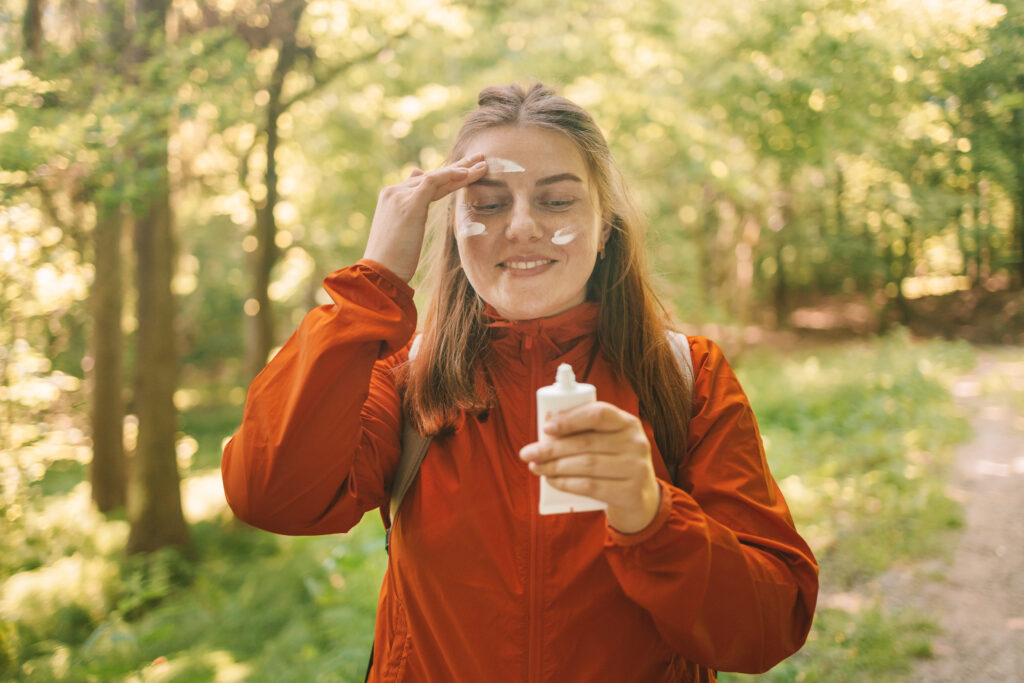July 30, 2024
Skin Care for the Summer and for the Whole Year

Being outside is a great way to be physically active, reduce stress, and get vitamin D. However, too much sun can be dangerous to your skin. The sun’s ultraviolet (UV) rays can cause sunburns, wrinkles, age spots, and most skin cancers. In the US, skin cancer is the most common cancer. While people with lighter skin color may be more at risk, people with darker skin tones can also get skin cancer.
UV rays are an invisible kind of radiation that comes from the sun. Protection from UV rays is important all year. The sun’s harmful rays can reach you even on days when it’s cloudy, and they reflect off of surfaces like water, cement, sand, and snow. They can go through light clothing, windshields, windows, and clouds. UV can also come from tanning beds and UV or sunlamps.
Keep your skin healthy and youthful with these tips from the Cambridge Public Health Department. Remember, these are everyday skincare tips and not just for the summer. Using more than one form of skin protection at once will also provide better protection against UV rays.
- Put on a thick layer of sunscreen before you go outside. Use a broad spectrum sunscreen that filters out both UVA and UVB rays (types of UV rays) and has at least an SPF 15 or higher. Sunscreen wears off. So put it on again if you stay out in the sun for more than two hours and after sweating, swimming, or toweling off.
- Protect your lips. Apply lip balm or lipstick that has sunscreen in it.
- Wear sunglasses. They protect your eyes from UV rays and reduce the risk of cataracts. Sunglasses also protect the tender skin around your eyes from sun exposure.
- Wear a hat. For the most protection, wear a hat that has a brim all the way around that shades your face, your ears, and the back of your neck. A tightly woven fabric, such as canvas, works best to protect your skin from UV rays.
- Dress in sun protective clothing. When possible, wear long-sleeved shirts and long pants and skirts, which can provide protection from UV rays. If wearing this type of clothing isn’t practical, try to wear a T-shirt or a beach cover-up. Some clothing is certified under international standards as offering UV protection.
- Seek shade. Reduce your risk of sun damage and skin cancer by staying in the shade under an umbrella, tree, or other shelter. Staying in the shade also helps with staying cool in hot weather.
- Be mindful of when UV rays are most intense. The UV rays are most intense in the midday. If possible try to schedule outdoor activities in the morning, late afternoon, or evening. If not possible, remember to use other forms of sun protection like wearing sunscreen and wearing protective clothing.
- Avoid tanning, and never use UV tanning beds. Getting a gel manicure? While less risky than using tanning beds, The Skin Cancer Foundation recommends applying sunscreen to your hands 20 minutes before your hands are exposed to UV light.
- Take care of your sunburn: Be sure to drink water to keep yourself hydrated. Use creams or over-the-counter pain medications if your doctor allows. Stay out of the sun until skin is healed! The CDC has more information about sunburns and how to treat them.
- Check your skin regularly. Keep an eye on your skin for any new spots, spots that are different from other spots on your body, or moles that itch, bleed, or change color. See descriptions and photos on the CDC’s website. These are often early warning signs of skin cancer. If you notice any suspicious spots, make an appointment to see a dermatologist. When detected early, skin cancer—including melanoma—is highly treatable. Learn more about early detection of skin cancer.
